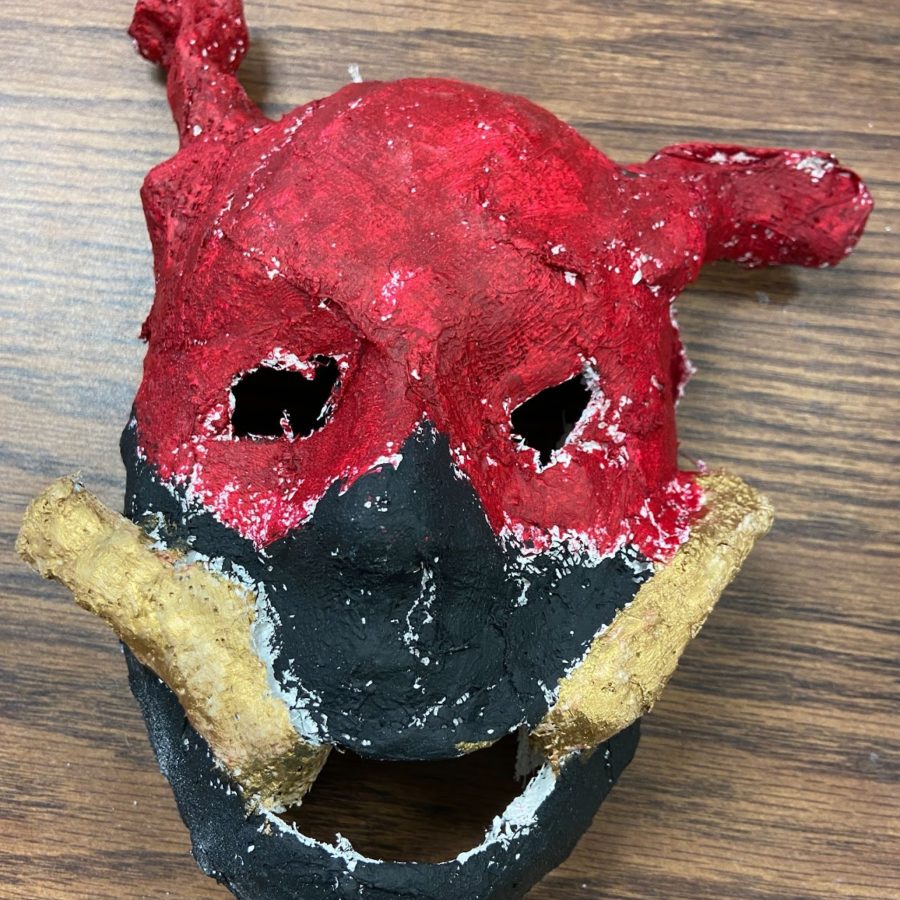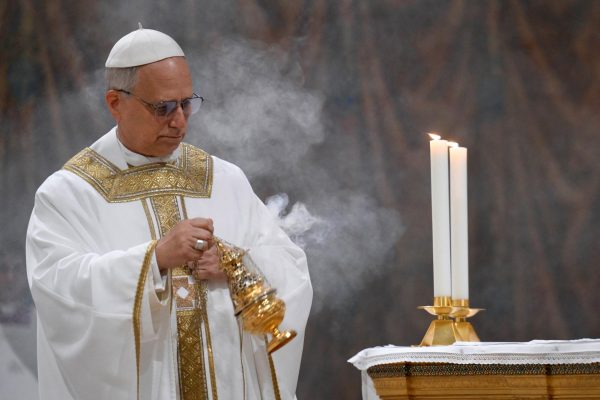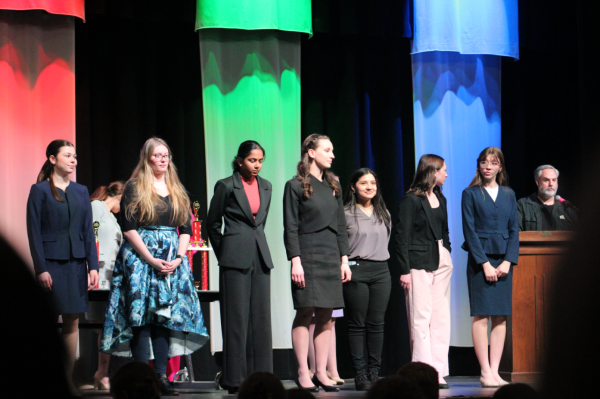Cultural Art Face Masks
A Spanish translation of this article is available as “Mascarillas de Arte Cultural.”
Students are making masks for the Intro to 3D Art class at LHS. They are making cultural art face masks for other countries that represent their traditional culture and the purpose of these masks.
Introduction to 3D Art teacher Nikki Ingalls introduced the cultural mask project to the students so they can see the uses of the masks and what they really mean. Each student chose a country to make each traditional mask from other countries.
“I chose this project because it allows a lot of creative freedom and the exploration of multiple design elements and principles. This project also combines research with art-making (one of my favorites) and connects with the upcoming Multicultural Festival. It’s a fun project to see the progress made in a couple of weeks. Masks, in general, are not a new concept for students, so there is already some familiarity. Once they are shown some techniques for reconstructing the facial mold, it really becomes a series of problem-solving and decision-making moments for them. I love that everyone starts out with the same plastic mold, but in the end, their mask is really unique,” Ingalls said.
Some of the masks and other multicultural works from the art department will be on display in the art gallery during the Multicultural Festival.
“Art is communication and has the ability to connect people regardless of language differences. The arts also have the ability to connect with every part of our lives and the world. This project gives students the opportunity to investigate various cultures and create an object based on their findings that others can enjoy,” Ingalls said.
Freshman Daisy Pablo chose to make a traditional Mexican mask.
“I chose to make the traditional Mexican mask on the Day of the Dead, which is celebrated on the first day of November and the second day. Also, because it is very beautiful. I like how everything is decorated. The mask represents a deceased loved one. The idea is to dance in honor of a loved one to keep the spirits close,” Pablo said.
Freshman Daniel Castro-Salinas chose to represent the Japanese cultural mask.
“The reason I chose this specific skin layout is because I like the skin layout. The country of origin is Japan. Currently, the mask is used to act mainly for fun or entertainment and for tributes to the gods. Some of the kitsune masks are used to pay tribute to the gods and the mask can be used for ritual practices. The masks are mainly used to attend parties in Japan,” Castro-Salinas said.
Another student chose to make the Japanese mask.
“I chose a kitsune mask because I like Japanese culture and style. Historically, foxes were seen as magical creatures with the ability to change shape. The kitsune mask is known as a fox mask and is a special mask worn by the Japanese on special occasions. Kitsune masks or fox masks are worn by participants in certain Shinto festivals or by attendees just for fun,” said sophomore Maria del Sol Lopez Padilla.
Freshman Savannah McMinn chose to create the African culture mask.
“My mask is from Africa. The meaning behind this mask is to provide materialism to unseen spirits, and I chose to make this mask because it helped me create a better outline of all the details of my mask. It’s interesting how they use the masks during ceremonies, dances, and festivities, and rituals to commemorate social and religious events,” McMinn said.
Your donation will support the student journalists of Logansport High School. Your contribution will allow us to purchase equipment and cover our annual website hosting costs.

Being on the Magpie staff has helped me a lot. I cannot begin to describe the immense impact my three years as a staff member have had on me. So many life...











